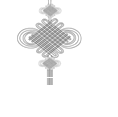题目内容
Our 4-year-old hero’s story started this past February. Austin and his father were watching a program about a mother panda leaving her babies. “I told him that the baby pandas would be homeless for a while,” his father says, “Austin didn’t know what homelessness meant, but he was sad and wanted to know more.”
Seeing this as a____ moment, Austin’s father took him to a local shelter (避难所) that provides housing, food, and other services for homeless men. They saw some homeless men standing on the street corner. “Dad, they look sad,” Austin said. “Can we take them some food and make them____?” Then Austin used his pocket money to buy each man a sandwich and_____ out the food himself. Seeing what their presence (出现) meant to the homeless, Austin and his father returned the next week. After they came back every week for five weeks, word of Austin’s acts of kindness___ through social media. Burger King jumped aboard, agreeing to give $1,000 a month for a year. Soon, other shelters began inviting Austin to come and give out food in other poor areas. But Austin isn’t just filling bellies ( 胃 ). He is___ the lives of those he meets. The respect Austin gave to 41-year-old Raymont touched the man. He shared with Austin’s father just how grateful he was to be treated so______by a four-year-old stranger. Austin’s father helped Raymont to get a driver’s license, which helped Raymont get a job. And he was finally able to have his own apartment. All that was made possible because a little boy took the time to care.
Austin’s love for the homeless has now become his family’s_____. Austin’s mother founded an organization to fight homelessness. Austin’s father left his job to oversee public relations for the organization. The couple plan to build their own shelter, which would___ medical and mental health care.
As for Austin, he continues to give out food, smiles, and his love. “It makes me feel like I’m saving the day.”
1.A.likeable B.moveable C.teachable D.readable
2.A.shout B.smile C.cry D.talk
3.A.found B.put C.handed D.sold
4.A.got B.broke C.spread D.run
5.A.creating B.protecting C.controlling D.improving
6.A.simply B.proudly C.hopefully D.thoughtfully
7.A.feeling B.calling C.greeting D.gathering
8.A.offer B.affect C.test D.reduce
 阅读快车系列答案
阅读快车系列答案书面表达
寒假即将来临,假设你是Tom,请根据表格的内容用英语给21世纪报写一篇的今年寒假的生活打算,顺便描述一下去年的寒假的安排及感想。
时间 | 活动 | 感想 |
去年 | 做作业,上网,偶尔看电影 | 待在家里很无聊 |
今年 | 去三亚旅行, | ...... |
注意:1.文章必须包括表格中的全部内容,可适当增加细节,展开合理的想象:
2.文章开头已给出,不计入总词数,只需接着写
3.至少补充一项今年的活动,并写一至两条感想
4 词数 70左右
Winter vacation is coming .But I still remember my last winter vacation .
_____________________________________________________________________


